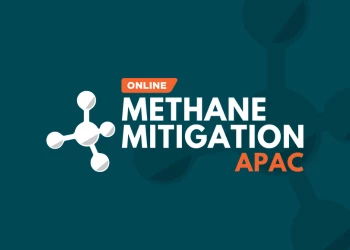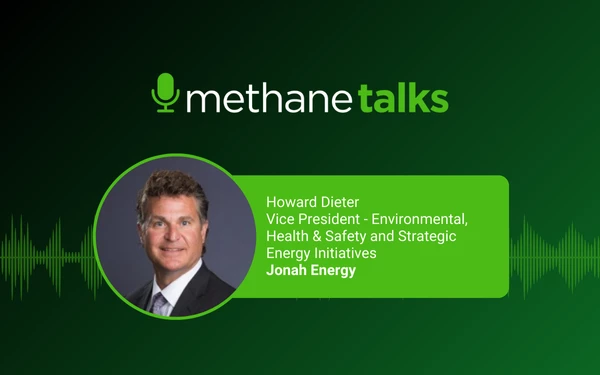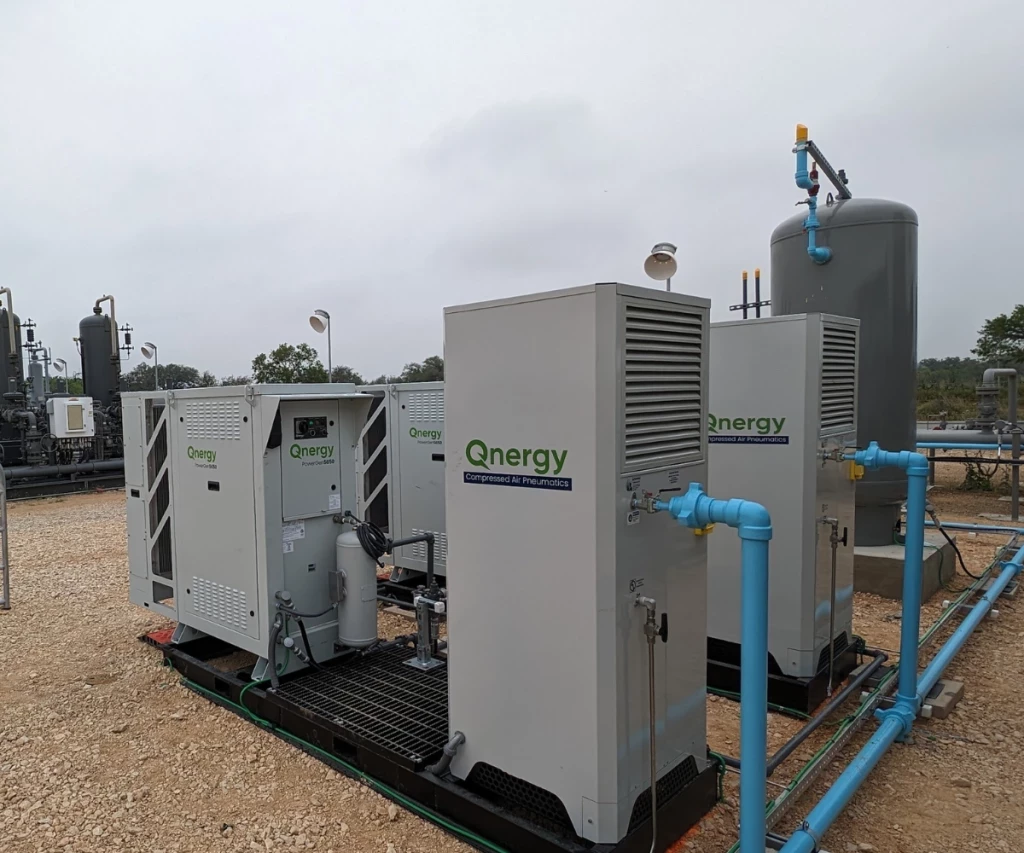Reducing Emissions and Enabling the Energy Transition: A Q&A with National Gas and NevadaNano
Add bookmark
National Gas is a leading transmission system operator in the UK, responsible for transporting natural gas through a vast pipeline network. As part of its commitment to a lower-carbon future, National Gas is advancing a comprehensive strategy focused on methane (CH4), carbon dioxide (CO2), and hydrogen (H2). The company is actively working on large-scale projects to reduce greenhouse gas emissions while also preparing for the future by expanding infrastructure to accommodate hydrogen blending.
To better understand how National Gas is using technology to achieve these goals, we spoke with Doug Millington-Smith, the Operational Innovation Lead for Measurement and Automation for National Gas directly to discuss:
- How emissions monitoring technologies support emissions mitigation efforts
- The unique challenges of working with hydrogen related to emissions management
- How emissions data is helping inform operational decisions and future infrastructure projects
Q: What are some of the big issues National Gas are trying to resolve?
A: National Gas is focused on delivering a three-molecule strategy based on the flow of methane (CH4), the capture and storage of carbon dioxide (CO2) and the development of hydrogen (H2) as a blended replacement to natural gas. Emissions of all three gases are a concern, and National Gas is committed to reducing these to a minimum. However, you cannot mitigate what you cannot measure, and the ability to more accurately and immediately detect, localise, quantify and report the rates of emissions is one of the central pillars of our decarbonisation portfolio. Emissions from above-ground installations (AGIs), whether fugitive emissions, venting or process emissions from operating equipment such as compressors, are historically challenging to carry out due to the highly manual process associated with their measurement. In the ever-tightening regulatory landscape, accurate reporting of site-wide emissions is only going to become more important.
Q: How are you leveraging technology to help with these issues day to day?
A: National Gas’ current emissions quantification strategy for CH4 involves a pattern of intensive emissions discovery events at AGIs on a regular schedule, ensuring that each AGI has its emissions assessed with a regular frequency. The process is labour intensive, as each piece of the equipment has to be monitored with close-proximity measurement devices such as gas sniffers and optical gas imaging (OGI) cameras. National Gas is actively seeking ways of improving the efficiency of these regular surveys and supporting them with predictive models or automated processes. The answer lies in measuring all of the time (continuous monitoring), but few solutions have been developed which actually deliver on the requirements of a site-wide continuous monitoring system.
Q: What technology gaps do you envisage as gas companies increase Hydrogen in their blend?
A: H2 is a very different molecule to CH4, and this presents some challenges unique to the development of blended gas that flowing and processing natural gas alone does not encounter. Typical emissions detection methods for CH4 frequently involve infra-red (IR) laser spectroscopy, but these are ineffective for H2 due to its lack of dipole. Other methods of detection, such as ultrasonic monitoring, heat-capacity-based sensing, and even Raman spectroscopy, must be considered when seeking to monitor emissions of H2. The market for these solutions is still very young, with very few market-ready, scalable solutions with suitable robustness, accuracy and precision are available.
Q: You have been using MethaneTrack and EmissionsTrack from NevadaNano as continuous emissions monitoring technology for 2+ years. What can you tell us about this technology?
A: The MethaneTrack and EmissionsTrack software from NevadaNano presents as a simple and intuitive dashboard on a web server, giving a quick, informative overview of the major emissions that have been recorded by the network of sensor endpoints deployed at a site. An interactive map allows the user to zoom in and view results on a more granular scale, as well as select individual emissions and see their projected location and flow rate. This enables the much more targeted dispatch of site operators to investigate the immediate vicinity of the reported emission, rather than requiring them to walk over the entire area (or worse, wait for the next periodic survey). While this is a very convenient package, there is still room for improvement in terms of the data export capability. In the ever-changing regulatory environment, the ability to produce emissions reports compliant with standards is invaluable – a template function that maps the output of the sensor network into a compliant format for reporting against required standards would represent a major step forward for busy site operators mindful of their obligations.
Q: What problems are you trying to solve using this technology?
A: The problem of effectively monitoring all of the time continues to challenge the limits of emissions technology – many solutions offer it, but not all deliver on the right scale or with the right accuracy, security or accessibility. In particular, few, if any, solutions offer continuous monitoring and reporting for the H2 emissions that will be required as National Gas begins to blend this species with CH4. The MethaneTrack and EmissionsTrack software represents an attempt to better understand the emissions being generated across a site, to better inform repair operations and to prioritise them on a condition-based basis rather than a purely time-based arrangement. Where significant emissions occur, rather than waiting until the next survey to detect them (and incurring the loss of product and potential financial penalties of doing so), the emissions are reported in real time and can be prioritised into the ongoing site works.
Q: How is National Gas using data from system like MethaneTrack & EmissionsTrack?
A: National Gas is utilising the MethaneTrack/EmissionsTrack software in two ways, in the short- and longer-terms. Firstly, it is deployed as a first-alert tool to help prioritise emissions reduction activities on a day-to-day basis, and aid reporting of emissions found and repaired. Secondly, the historical data from the last 2+ years of sensor endpoint deployment is being mined for patterns in reported emissions. These patterns can be indicative of the need for different maintenance schedules on certain equipment, or systematic issues that require engineering change. This multi-faceted approach applies to both CH4 and H2 emissions monitoring, enabling the MethaneTrack/EmissionsTrack software to potentially be of use both now and in the future.
INSIGHTS FROM NEVADANANO
We spoke with Gary Collins, the Vice President of Sales and Marketing at NevadaNano to discuss the projects with National Gas and to ask him how working with them has helped shape their technology roadmap.
Q: How has working with National Gas impacted the development of MethaneTrack?
A: Working with National Gas on these innovation projects has been a pleasure. NevadaNano has its’ roots as a sensor technology company with our proprietary Molecular Property Spectrometer™ (MPS™) sensor. It was a breakthrough in sensor technology that was originally developed for the Defense Advanced Research Projects Agency (DARPA), the Department of Homeland Security (DHS) and the Department of Defense (DOD) for demanding military and anti-terrorism applications. It has now been adapted for commercial application and is used in worker safety devices by manufacturers such as Crowcon, Blackline Safety, and Teledyne Gas and Flame. The MPS sensor detects and classifies flammable gases such as Methane and Hydrogen with no poisoning or saturation and long life of over 15 years without the need for field calibration. It is also certified intrinsically safe for use in hazardous areas, so it was a natural step forward to use it in an IoT Endpoint, capable of monitoring and reporting on emissions from oil and gas sites. In this way, we have already demonstrated that we are a technology company capable of adapting to the needs of customers. Working with a customer like National Gas has provided us with the opportunity to further validate our technologies and build new features related to the monitoring and reporting on Hydrogen emissions.
Q: How has working with a blend of natural gas, including Hydrogen, changed how you have engineered your product?
A: One of the new features that we developed was the quantification of individual gas emissions when there is a gas blend in the system. And we needed to adapt our Leak Source Isolation™ algorithms, which allow us to provide the location of a leak to customers, to adapt to Hydrogen, as it is a smaller molecule, and behaves differently when emitted. We ended up deciding to create a separately branded product called EmissionsTrack that has the same core features as MethaneTrack but offers the ability to report on Hydrogen emissions in addition to Methane and Methane blends.
Q: What are the next steps in the product development?
A: Right now, we are putting the finishing touches on enhancing the reporting functionality of our dashboard and analytics platform that will allow our customers to generate standard or custom reports to meet regulatory, shareholder, and stakeholder requirements.
Q: What other types of oil and gas emission innovation projects are you working on?
A: The Multi Gas Phase 2 is our second innovation contract with National Gas, which is focused on Hydrogen quantification. We have also been included as part of an NGIF Emissions Testing Centre Program project with Tourmaline Oil Corporation in Canada to evaluate MethaneTrack's capabilities to other methane detection technologies. The results validated that MethaneTrack effectively detected emission events from both controlled and uncontrolled tanks for extended periods, validating its capability for close-proximity continuous methane monitoring. Furthermore, it found our leak localization, pinpointing the source of emissions, rather than broadly identifying multiple potential leak sources, represents a significant improvement over traditional monitoring systems. Right now, we have 200+ sites running in US basins, with a wide range of other applications in 10+ countries and are also currently working on a global roll out for an offshore operator.
Conclusion
As National Gas advances its emissions reduction initiatives and prepares for a hydrogen-inclusive energy future, its use of advanced monitoring technology and real-time emissions data plays a crucial role. By identifying, prioritizing, and repairing leaks more efficiently—and gaining a deeper understanding of how hydrogen behaves in controlled settings—National Gas is demonstrating how data-driven innovation is essential for navigating the path to decarbonization. MethaneTrack and EmissionsTrack are helping bridge the gap between regulatory demands and real-world emissions monitoring challenges. NevadaNano is collaborating closely with energy companies to drive innovation and tailor its technologies to the complex realities of emissions monitoring in the field. With robust tools for real-time detection, precise quantification, and insightful historical analysis, its systems are emerging as vital infrastructure for operators working to meet decarbonization goals and regulatory requirements.
About National Gas
National Gas is Great Britain's national gas network - providing secure energy to power Britain and achieve net zero. Learn more at www.nationalgas.com
About NevadaNano
NevadaNano provides safety and climate solutions for many of the world’s largest corporations, with innovative multi-gas sensing products and automated continuous emissions monitoring systems based on their proprietary Molecular Property Spectrometer™ (MPS™) sensor technology.
The company has offices in the United States, Europe, China, and the Middle East. Learn more at www.nevadanano.com or watch their latest release of MethaneTrack™, an automated emissions monitoring system to detect and identify the location and size of methane leaks.





























